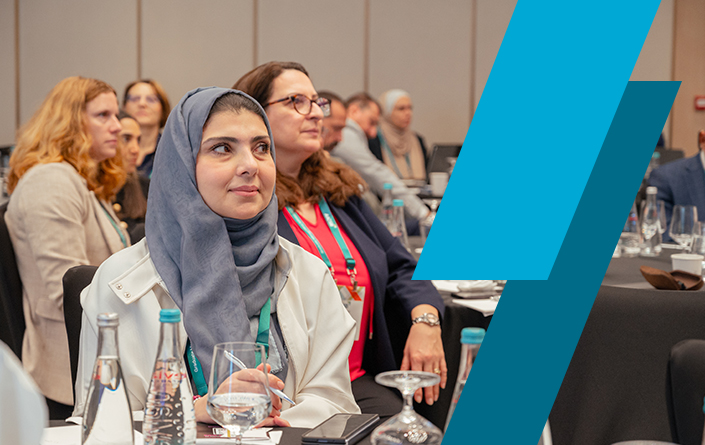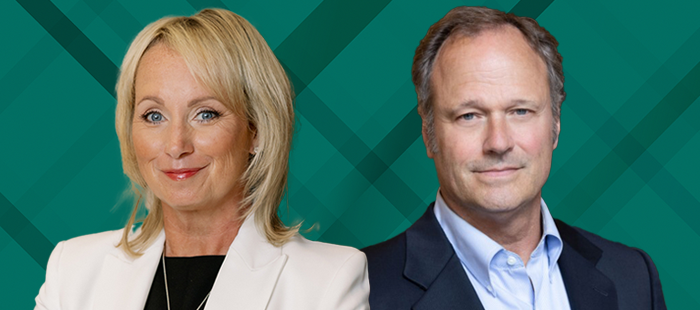Instilling an Innovative Mindset in Students
- Business educators have a responsibility to teach and allow learners to practice creative and innovative thinking.
- Problem-based learning can help unlock students’ curiosity and encourage their thirst for developing new skills.
- Providing students with the tools to not only generate but also implement creative ideas can challenge them to solve problems using unconventional approaches.
Learn about AACSB's Innovations That Inspire program at aacsb.edu/innovations-that-inspire.
Transcript
Mary Conway Dato-on: [0:15] Whether you're thinking about innovative mindsets or entrepreneurial mindsets, it's really not, "What am I trying to be? Am I trying to be an entrepreneur?" No, I'm trying to have an entrepreneurial mindset or I'm trying to have an innovation mindset.
[0:27] I may never innovate or create maybe an innovation ever in my life, but if I approach every day thinking, "What new stimuli can I let into my environment?" then I'm actually going to be innovative because I'm looking.
[0:45] One of the colleagues that I work with talks about you can do something as innovative as drive, bike, or walk to work in a different way every day. When we change our routine, that creates a mindset of looking for new answers, and it will lead to new questions.
[1:00] That's when that innovation happens because we're looking not to create something, but to respond to what is needed. We know what is needed because we're constantly changing up the ecosystem.
It's so often the quality of the questions that people are asking that reflects how much they know about the material that's being presented to them. That's what we call the T-shaped learner.
Lan Snell: [1:13] Producing innovation means doing things differently. I think for business schools, we're looking at creating the next T-shaped learner. By that, I mean, most people come with a depth of experience in a particular domain. We're looking to create a T shape to that. That is developing their capabilities in understanding how to solve the problems of the future.
[1:38] Here, we're tapping into what the World Economic Forum describes as the 17 essential skills. We're talking about critical thinking, we're talking about communication, we're talking about collaborating with impact. We're talking about understanding how to integrate data and synthesize that to create value and to answer the questions.
[1:57] It's so often the quality of the questions that people are asking that reflects how much they know about the material that's being presented to them. That's what we call the T-shaped learner. I think moving in the discourse or the background of this lifelong learning concept, that's just something that we need to do.
Christine Mathies: [2:17] Business schools can instill an innovative mindset in students in a number of ways. First and foremost, I believe that innovation and creativity are not an innate ability, but something that can and should be learned.
[2:30] A curriculum that teaches students those skills and lets them both learn and practice what it means to be a creative, innovative thinker is the number one.
[2:40] Secondly, active problem-based learning is a fantastic tool to instill students' innovative mindsets because it unlocks their curiosity to address problems that so far they have been unable to solve, and they have a thirst for learning the knowledge and the skills that they need to do so.
[2:58] In order to instill a mindset, it's also important to reshape assessment. Assessment is the one and only time where we have students' undivided attention. To have authentic assessment tasks that require thinking outside the box, applying creative tools, and active problem-solving is something that helps to instill that mindset.
Active problem-based learning is a fantastic tool to instill students' innovative mindsets because it unlocks their curiosity to address problems that so far they have been unable to solve, and they have a thirst for learning the knowledge.
Kathryn Ernst: [3:20] Business schools have a really important role in preparing students for creating innovations in the future. Innovation is not just a new idea or a new method, but how to implement the new idea and method. I see innovation as a two-step process. It's coming up with these creative new ideas and learning how to implement them.
[3:43] There's a lot of opportunity to teach students, give them real tools, structures, and processes that they can follow to be innovative. We believe that the best way to teach a student is to have them do the process and go through it hands-on.
Edita Gimžauskienė: [3:59] Currently, we are going through accreditation process. We've been developing our assurance of learning framework which is based on five competencies. The first is cutting-edge knowledge, strategic and critical thinking, entrepreneurship, and change leadership.
[4:17] I think that all the skillset, it's all about innovative mindset. It means that if you have such kind of mindset and such kind of skillset in your mission, you have to be different. You have to deliver course in different ways, you have to give different tasks for the student, and you have a different way how you evaluate students.
Business schools have a really important role in preparing students for creating innovations in the future.
Anshu Arora: [4:37] I teach marketing research. It's a lot about research and doing something on your own. The students, as soon as I start talking to them that you have to do research on something that you like or you're passionate about, they get a little confused because you're not talking about a textbook.
[4:51] We're talking about something which is more open. You're trying to explore something. You'd have to go out, experiment things. Initially, I know there's a lot of fiction, but as soon as they start working on it and they feel that their own ideas are coming to the fore, then suddenly, things change.
[5:06] A lot of things can happen when the students do research and when we give them that creativity and that openness that, "Hey, you can explore things on your own. The world is not just your textbook. You can actually see and make things, change it for the better."
[5:19] Look at ideas which are around you, give them the leverage and the freedom, and they will completely shine.






